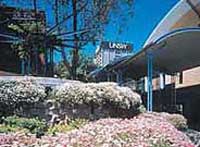|
|||||||||||||||||||||||||||||||||||||||||||||||||||||
| Comparative Patent Law - LAWS8143 | |||||||||||||||||||||||||||||||||||||||||||||||||||||

Description This course will examine patent law from both an administrative and jurisprudential perspective. It will examine: the procedural and legal requirements for the grant of patent rights in Australia, including what constitutes patentable subject matter and the requirements of novelty, obviousness, utility and secret use; the grounds upon which patent rights may be challenged; ownership; exploitation; infringement and defences. While the course will focus on Australian law, consideration will be given to comparative jurisprudence, focusing on the US and UK, in particular to highlight differences in how these jurisdictions have considered particular legal concepts as well as controversial subject matter such as biotechnological inventions and business methods. It will also cover emerging trends and policy debates in Australia and internationally.
LLM Specialisations Recommended Prior Knowledge This course assumes a working knowledge of intellectual property based on study at undergraduate level or through completion of the postgraduate course LAWS8017 Intellectual Property Law. You will be expected to have an overview of intellectual property law and/or to have read a recent IP textbook such as Davison et al, Australian Intellectual Property Law (2nd edn) (Cambridge University Press, 2011) or Stewart et al, Intellectual Property in Australia (4th ed) (LexisNexis, 2010) and IP casebook such as Bowrey et al, Australian Intellectual Property: Commentary, Law and Practice (Oxford University Press, 2010).
Graduate Diploma of Applied Intellectual Property students are expected to have a working knowledge of intellectual property based on study of the postgraduate course LAWS8046 Intellectual Property Law and Innovation. Course Objectives A candidate who has successfully completed this course should be able to:
Main Topics
Assessment
Course Texts Prescribed Recommended
Refer to the course outline which will be provided by the lecturer at the beginning of the relevant semester. |
|||||||||||||||||||||||||||||||||||||||||||||||||||||


